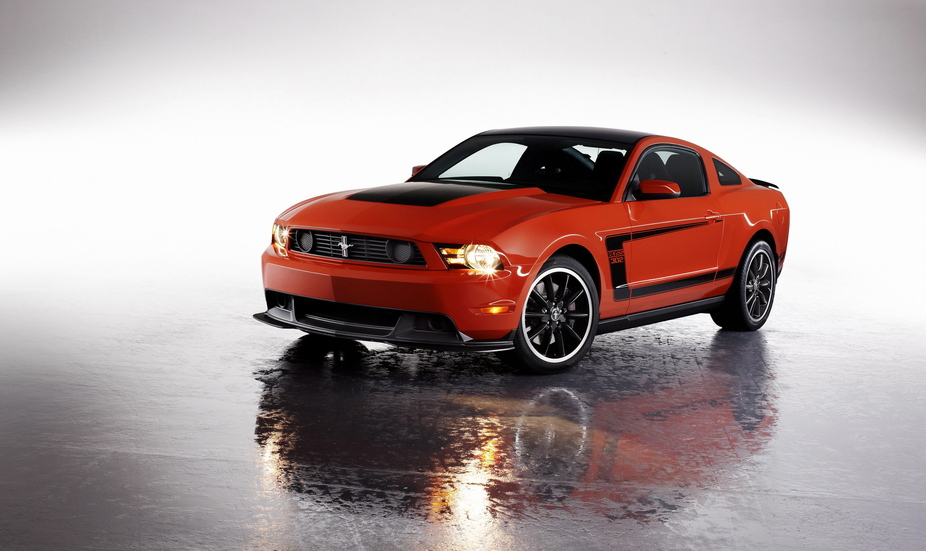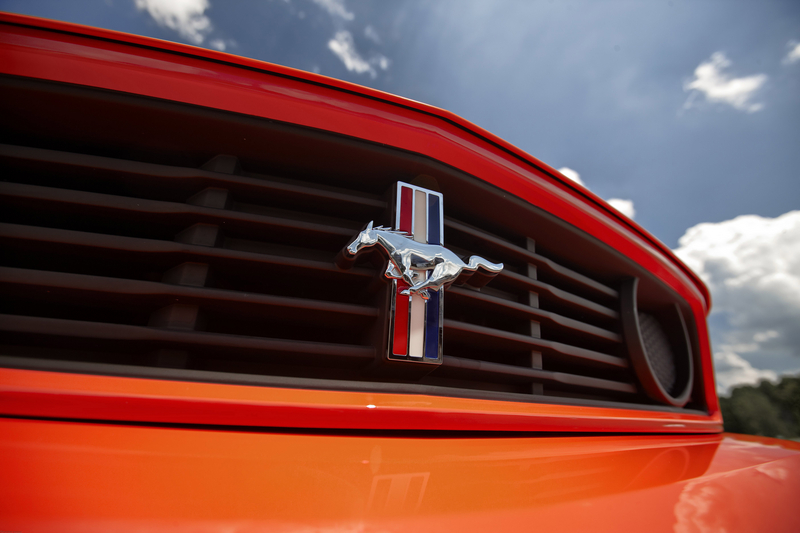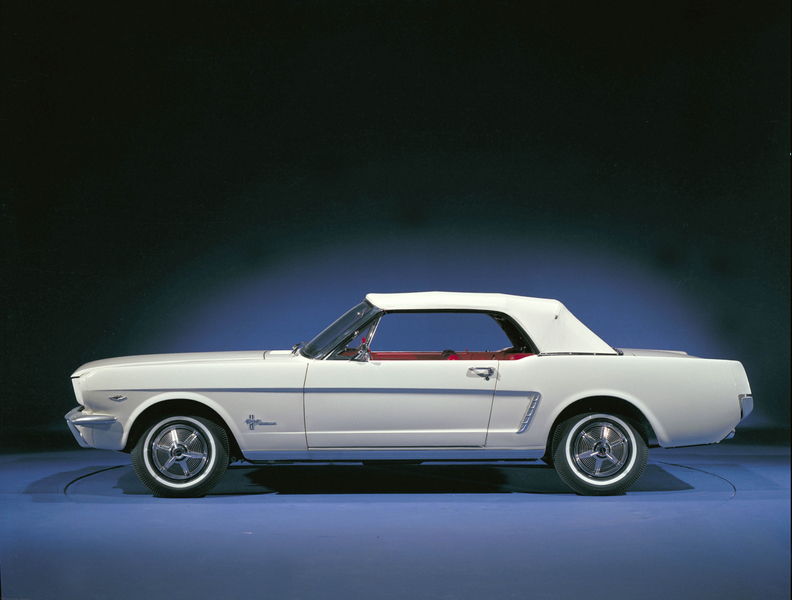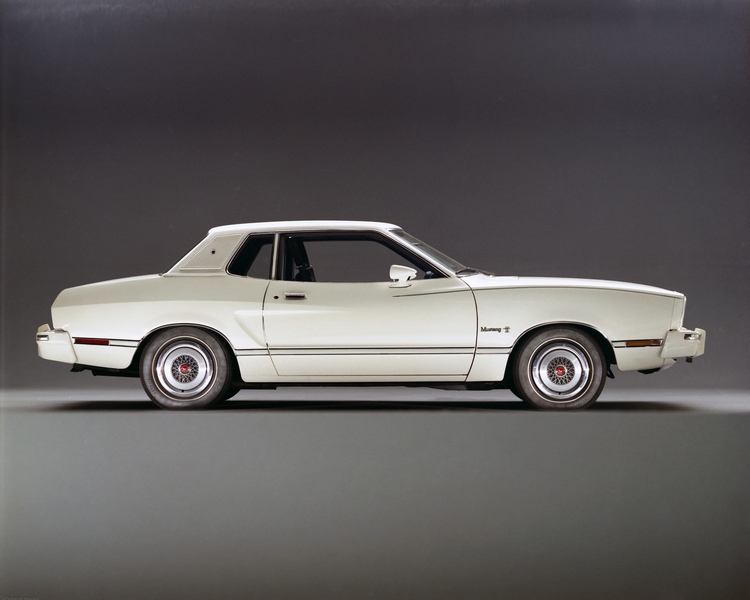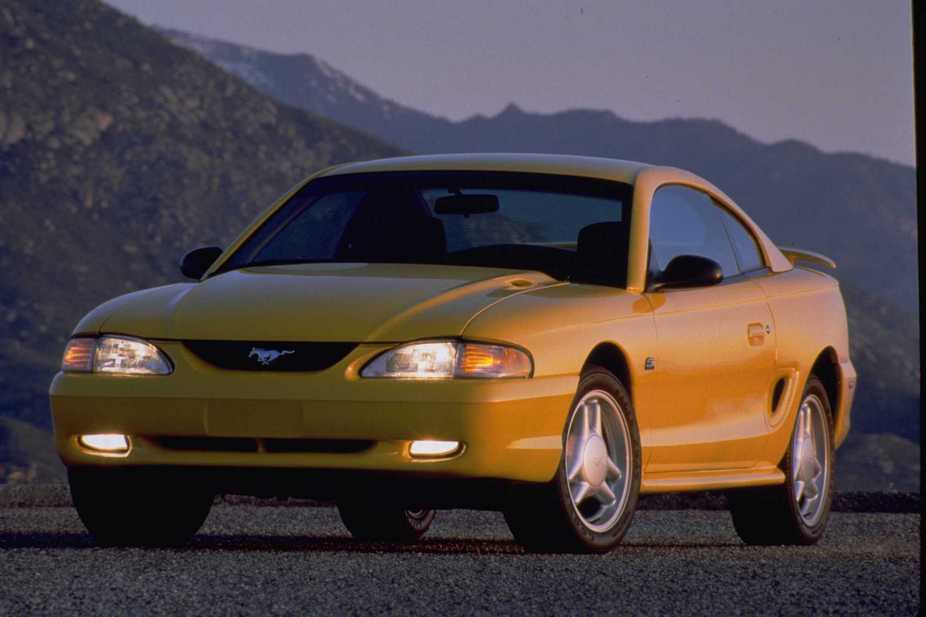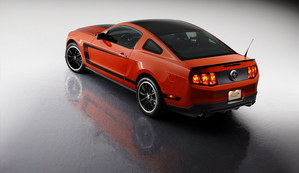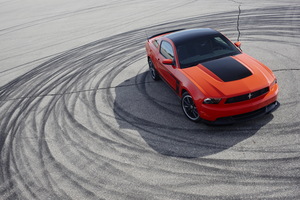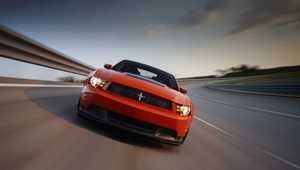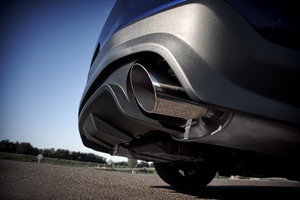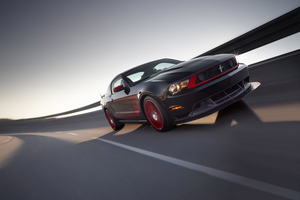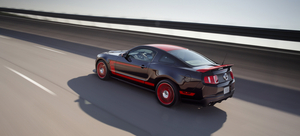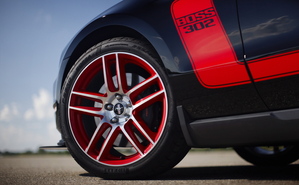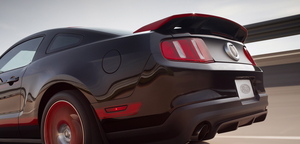|
Send this page to a friend! Fill in the form bellow | ||
news
Mustang Boss 302 makes comeback
Forty-two years later Ford has given the green light to the production of a new Mustang Boss 302. Keeping in mind the 1969 model the team of Ford engineers, designers and stylists, the same that developed the 2011 Mustang GT, worked to give the new model the purest form, strengthening, lightening and refining each system. The result is a race car with a license plate: the 2012 Mustang Boss 302.
According to Derrick Kuzak, group vice president, Global Product Development, “The entire team at Ford felt the time was right and with the right ingredients, the world-class 2011 Mustang could support a successful, race-bred, worthy successor to the original Boss 302. For us that meant a production Mustang that could top one of the world’s best – the 2010 BMW M3 – in lap times at Laguna Seca. We met our expectations.”
The new Mustang Boss 302 will also have a limited number of Boss 302 Laguna Seca models which will pay tribute to the new model’s racing heritage. The version receives its name from the track where Parnelli Jones won the 1970 Trans-Am season opener in a Boss 302. This limited edition will be aiming at racers more interested in on-track performance than creature comforts. The Laguna Seca version will have increased body stiffness, a firmer chassis set-up and an aerodynamics package carried over almost completely from the Ford Racing Boss 302R.
As for the engine featured in the new Boss, the V8 engine team, led by Mike Harrison, took the 5.0-litre 412 hp 2011 GT engine and increased its power. The result was a 28 hp increase with 515 Nm of torque. This was possible thanks to the revised camshafts which use a more aggressive grind and are activated with the same twin independent variable camshaft timing (Ti-VCT) mechanism used on the Mustang GT.
“The team at Ford wanted to offer their fellow Mustang enthusiasts something really special – a beautifully balanced factory-built race car that they could drive on the street,” explains Dave Pericak, Mustang chief engineer. “The Boss 302 isn’t something a Mustang GT owner can buy all the parts for out of a catalog or that a tuner can get by adding a chip. This is a front-to-back re-engineered Mustang with every system designed to make a good driver great and a great driver even better.”
Another aspect that hasn’t been forgotten on the new Boss 302 is the sound it makes. A team at Ford made sure that owners would get a Mustang Boss that sounded as one. The exhaust system featured in the 2012 Mustang Boss 302 has two outlets that exit in the rear similar to the Mustang GT. The Boss 302 has to other outlets that exit from each side of the exhaust crossover. They send exhaust through a set of metal discs that act as tuning elements before the pipes terminate just ahead of the rear wheel opening.
In terms of design the objective at Ford was to evoke the 1969 Boss in a contemporary way, according to Chief Designer Darrell Behmer. ““We approached this as curators of a legend,” explains Behmer. “We’ve taken design cues from the ’69 Boss street car and the menacing Bud Moore/Parnelli Jones race cars and carefully updated them to give the 2012 the proper bad-boy attitude that is unmistakably a Boss Mustang."
The Ford Mustang since 1964
With the Mustang, Ford invented a new automobile class, the “pony car”, and rival brands rushed into production to come up with cars of the same category. The first 18 months of the Mustang’s production stayed in history as the most successful car debut ever. After more than 40 years, the coupé is still being produced and Ford is selling around 150.000 Mustangs each year.
1964 Ford Mustang
In 1964, Ford unveiled their first ever Mustang. It inherited many parts, from other Ford models like the Falcon and Fairlane. Just 5 months after its introduction, the Mustang underwent a facelift and continued to grow heavier and bigger every year. The first generation Mustangs had mid and front engines, with displacements from 2.8 to 7.0 liters. The most basic model made 120hp while the top-of-the-line car delivered 385hp.
1974 Ford Mustang
The second generation Mustang was launched in 1974. After the continuous enlargement of the first generation until 1973, Ford decided to dramatically decrease its size to as close as possible to the original model. Shape and styling, as well as the mechanical features, were all reformulated in order to give the car an appearance that was closer to the 1964 model but with a higher performance.
1979 Ford Mustang
A fresh new Mustang, generation III, came out in 1979. Over the years, improvements were made to the Mustang regarding interior and exterior styling, giving it more comfort and a modernized look. Power was amplified as well throughout the years of production of the Mustang III. Ford also re-added the high-performance Mustang GT variant to the lineup in 1982.
1994 Ford Mustang
15 years past the Mustang’s last major amendment, in 1994, Ford launched its fourth generation. Motor Trend magazine named the Mustang Car of the Year for the third time when its fourth generation debuted. The Mustang IV engines ranged from a basic 3.8-liter to the top-of-the-line 5.4-liter Cobra R. Power output was increased along the years, starting at 145 hp to reach 190 hp for the standard version.
2004 Ford Mustang
Ford introduced the greatly redesigned fifth generation of the Mustang in 2004 at the North American International Auto Show. The refreshed car was an immediate hit in terms of sales. In 2012, the current Mustang received a minor facelift. Improvements include a changed exterior, and the 5.0 liter V8, introduced in 2010, got a power-uprgrade.
Encyclopedia | Engine V 8 Displacement 4951 cc Top Speed 250 km/h Transmission -- Maximum power 444 hp Type Fastback Fuel Petrol Fuel consumption (combined) -- | price $ 40.310 annual ownership cost -- |
Contribute
more about Ford



latest news




